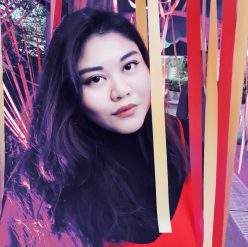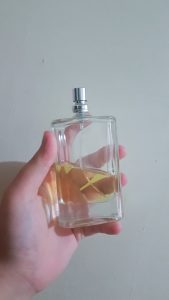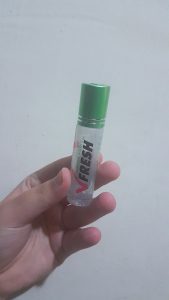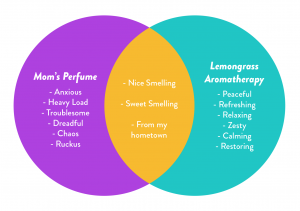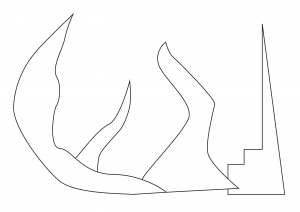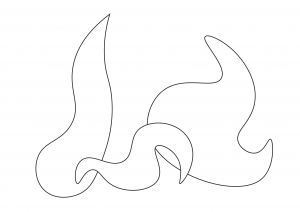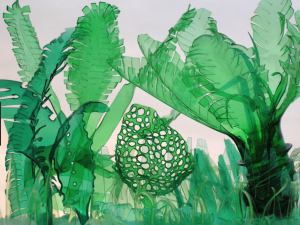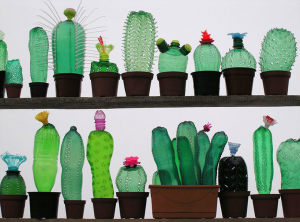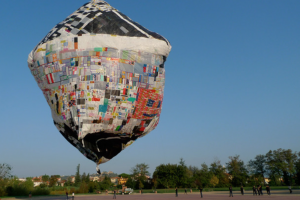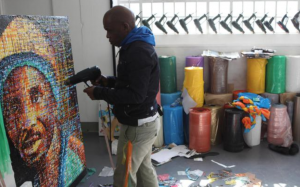The four scents that my partner and I had were lemongrass aromatherapy, my mother’s perfume, star anise and seawater. While brainstorming, all these scents have a common ground to it which is something that is beach-y and have the possibility of being something traditional as well. As a fan of the island Bali and a fan of massages, I could link all these four scents to a Balinese spa and massage spot that is right next to Kuta Beach in Bali.

This then inspired our choice of materials and the accessories that we were going to make. We decided to create a cape as a representation of how someone would feel after getting a massage – invincible, just like a superhero. We also made a forearm accessory which is our modern take on the Balinese dancers’ bangles.
Our Full Material List
Cape:
Batik Cloth
Complimentary Light Grey Cloth
Aluminium Plate
Wire Mesh
Mounting Board
Arm Piece:
Balsa Wood
20 Gauge Wire
Twines
Candle Wax
Star Anise
Starting with the shoulder pads first, we drew out the shape or planar that we desire before cutting it out. The right shoulder pad is shaped with a very pointed tip and is hammered to give it a bumpy texture, just like how my trip to attain my mother’s perfume is. The left shoulder pad is a simple curve that was sanded all over to give it a smooth texture. The sides of the right shoulder pad was sanded too so as to not injure and poke the model as well as anyone who touches it.
I have inserted a wire mesh as well as a bended mounting board so as to create a “suspended” planar for the cape. The mounting board and mesh were inserted and heated up so that the mesh and board could bend and be slightly more malleable. The entire cape is done by hand-stitch for better accuracy and it can also yield the cloth from any open holes. I also sewed a few strands into the board and mesh to ensure that it doesn’t shift about.
The complimentary grey cloth is pleated in the middle to give sort of a drape-y feeling as compared to the batik which is stiff, rigid and sharp as it is pointing upwards. Once both pieces of cloth are done being sewn, I then started to piece them both together with the shoulder pads.


The arm piece is made out off 20 gauge wires, twines and balsa wood. The balsa wood is the ![]() main or dominant piece and it is a broken plane. The twines were braided so it had more support and would be able to tie the pieces securely. Once we have pieced together the balsa wood and twines, we then burnt candle wax and star anise, to create my partner’s unpleasant scent.
main or dominant piece and it is a broken plane. The twines were braided so it had more support and would be able to tie the pieces securely. Once we have pieced together the balsa wood and twines, we then burnt candle wax and star anise, to create my partner’s unpleasant scent.
Final Model
The final cape model clearly showed the pleasant and unpleasant elements in both the fabric portion and also the shoulder pad portion. The batik fabric is suspended in the air, feels very stiff and has a sharp pointy edge representing the unpleasant scents. Whereas the grey complimentary fabric is very flowy, drape-y and has a lot of curves, representing how calming and relaxing the pleasant scents were.
My final thoughts
This project really thought me how to handle different materials and using it to have a particular outcome. It also taught me how to troubleshoot problems or glitches almost immediately especially when working in a tight deadline. I faced with problems such as not being able to have my fabric suspend in the air with just the wire mesh so I instantly thought of using a mounting board which proves to be able to support the heavy fabric.
In addition, I realized how for every portion of both the accessories we made, I tend to always have the conscious effort and thought to include planars the best that I can and it kinda have been ingrained in the designer part me now so I in the future I think I’ll always include planars HAHA.
